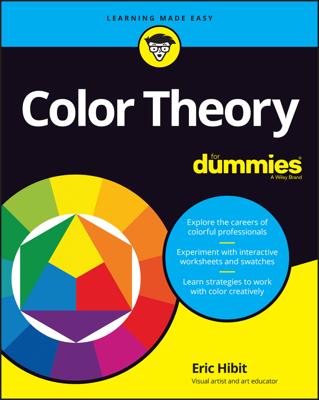Each one of the primary colors — red, yellow, and blue — is biased, meaning that it leans toward one of the other two primary colors. When mixing watercolor paints to get a secondary color — orange, green, or purple — use two primaries biased toward each other. Otherwise, you get a gray, muddy color.
For example, to get purple, be sure to mix a blue biased toward red such as ultramarine blue and a red biased toward blue such as alizarin crimson. When mixing colors, refer to the following list:
Reds with a blue bias: alizarin crimson, carmine, crimson lake, magenta, opera, rhodamine, rose madder, scarlet lake
Reds with a yellow bias: cadmium red, chlorinated para red, chrome orange, English red oxide, fluorescent red, Indian red, light red, permanent red, perylene red, phioxine red, red lake, red lead, sandorin scarlet, Venetian red, vermillion, Winsor red
Yellows with a blue bias: aureolin, azo, cadmium yellow lemon, cadmium yellow pale, Flanders yellow, lemon yellow, permanent yellow light, primary yellow, Winsor yellow, yellow light
Yellows with a red bias: aurora yellow, brilliant yellow, cadmium yellow medium and deep, chrome, gallstone, golden yellow, Indian yellow, Mars yellow, Naples yellow, permanent yellow medium and deep, raw sienna, Sahara, yellow lake, yellow ochre
Blues with a red bias: brilliant, cobalt, cyanine, indigo, mountain blue, ultramarine blue, verditer blue, Victoria blue
Blues with a yellow bias: Antwerp, cerulean, compose, intense blue, manganese, monestial blue, Paris blue, peacock blue, phthalocyanine blue, Prussian, Rembrandt, speedball, touareg, turquoise, Winsor blue

